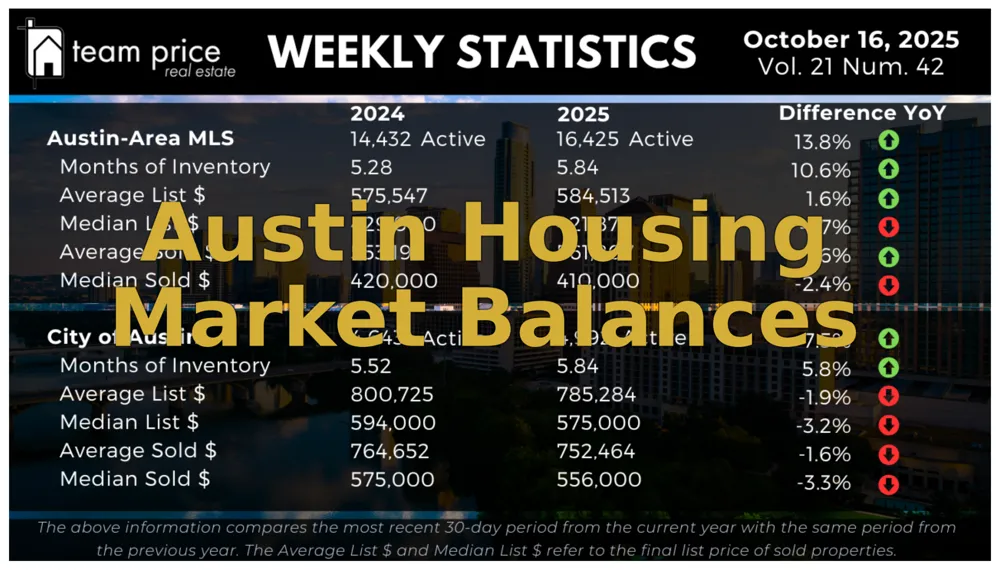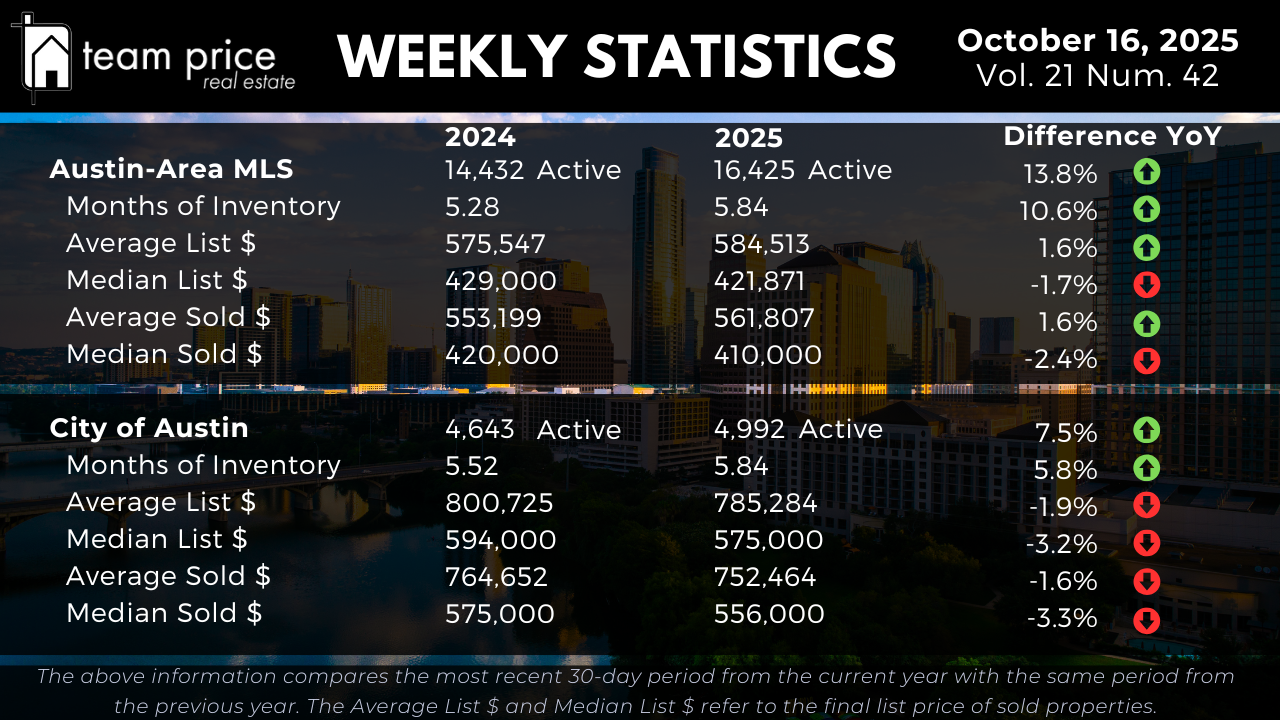Austin Housing Market Update: October 2025
The Austin housing market is entering a new phase of balance as fall 2025 unfolds. Inventory continues to rise, price growth has flattened, and negotiations have become a defining feature of buyer-seller interactions. The result is a more measured, data-driven market—far removed from the feverish pace of 2021–2022.
Expanding Inventory Signals a Balanced Market
Active residential listings across the Austin-Area MLS rose 13.8% year over year, from 14,432 to 16,425, while months of inventory increased to 5.84, up 10.6% from 2024. Within the City of Austin, supply is growing more moderately—4,992 active listings, up 7.5% year over year. Homes are staying on the market longer as absorption rates ease, confirming that Austin has transitioned from a seller’s market to a more balanced, negotiation-friendly environment.
Prices: Stable but Mixed
Region-wide pricing shows subtle shifts. The average sold price increased 1.6% year over year to $561,807, while the median sold price fell 2.4% to $410,000. Among active listings, the average list price rose 1.6%, but the median dropped 1.7%, revealing pressure in mid-priced and entry-level segments.
In the City of Austin, prices softened further: the average list price declined 1.9% to $785,284, while the median fell 3.2% to $575,000. Closed sales followed a similar trend, with the average sold price down 1.6% to $752,464, and the median down 3.3% to $556,000.
Suburban areas with newer construction and affordability diversity remain stable, while central neighborhoods are seeing deeper price corrections as discretionary and move-up buyers become more cautious.
Negotiations Define the Market
Buyers now hold more leverage. Roughly 69.2% of recent sales closed below list price, compared to 65.9% a month ago. Only 18.4% of homes sold at list price and 12.4% above, highlighting a major shift from the multiple-offer environment of prior years. The average sold-to-list price ratio now sits at 97.15%, meaning sellers are conceding around 3% on average to finalize deals.
This trend underscores two key dynamics: buyers are negotiating confidently, and sellers who overprice are seeing longer market times and deeper discounts. Accurately priced, well-presented homes, however, continue to attract serious attention.
Regional Snapshot
Of the 30 cities tracked in Central Texas, 16 posted month-over-month price increases while 14 saw declines, reflecting an evenly mixed landscape. Year over year, 11 cities showed price growth, while 19 posted drops, emphasizing that 2025’s housing market is not weakening—it’s normalizing.
Outlook
With inventory near six months and pricing stable, Austin’s housing market is in its healthiest balance in years. Buyers enjoy choice and negotiation power, while sellers who adapt quickly to market data continue to close successfully. As 2025 closes out, this equilibrium points toward a steady and sustainable path forward for Central Texas real estate.





